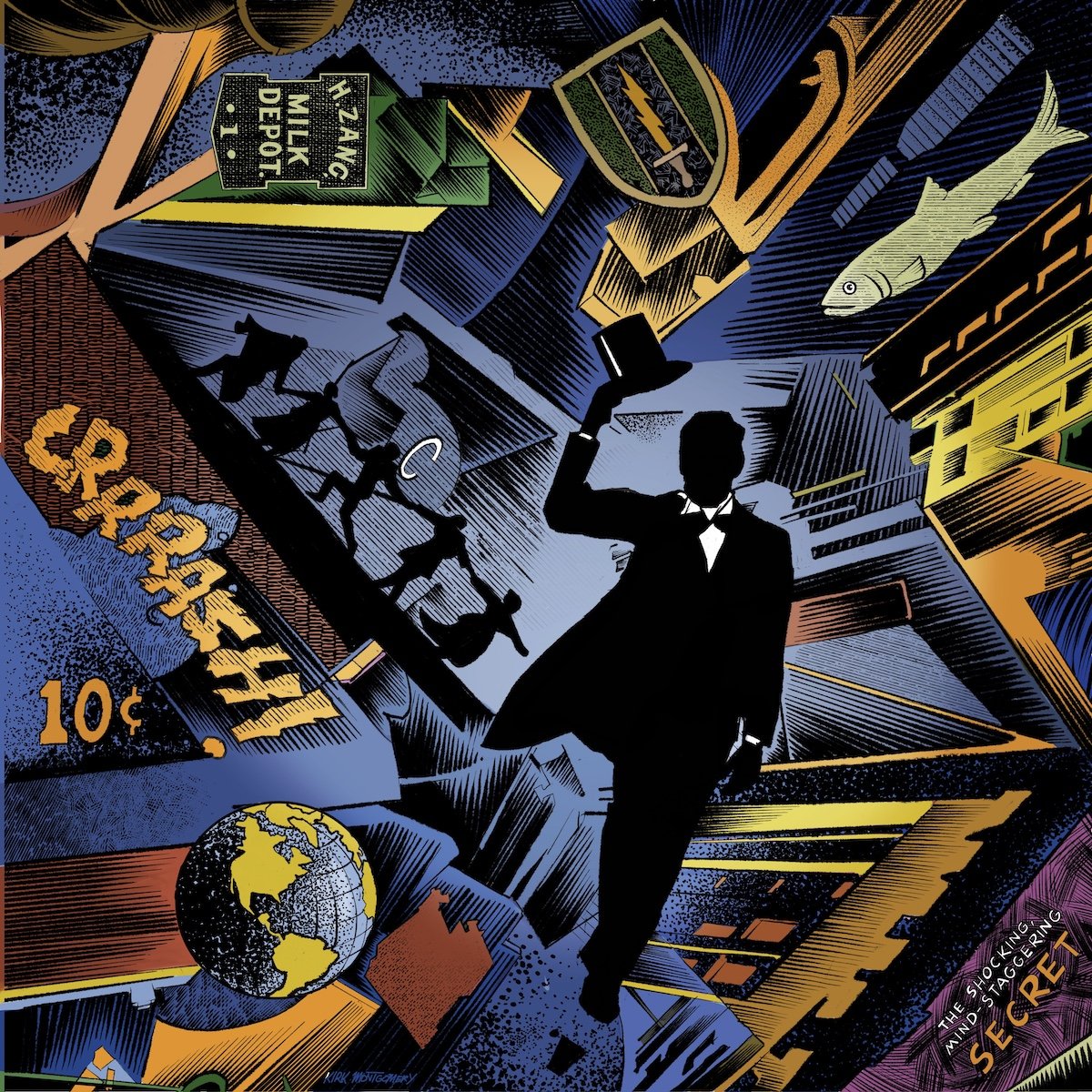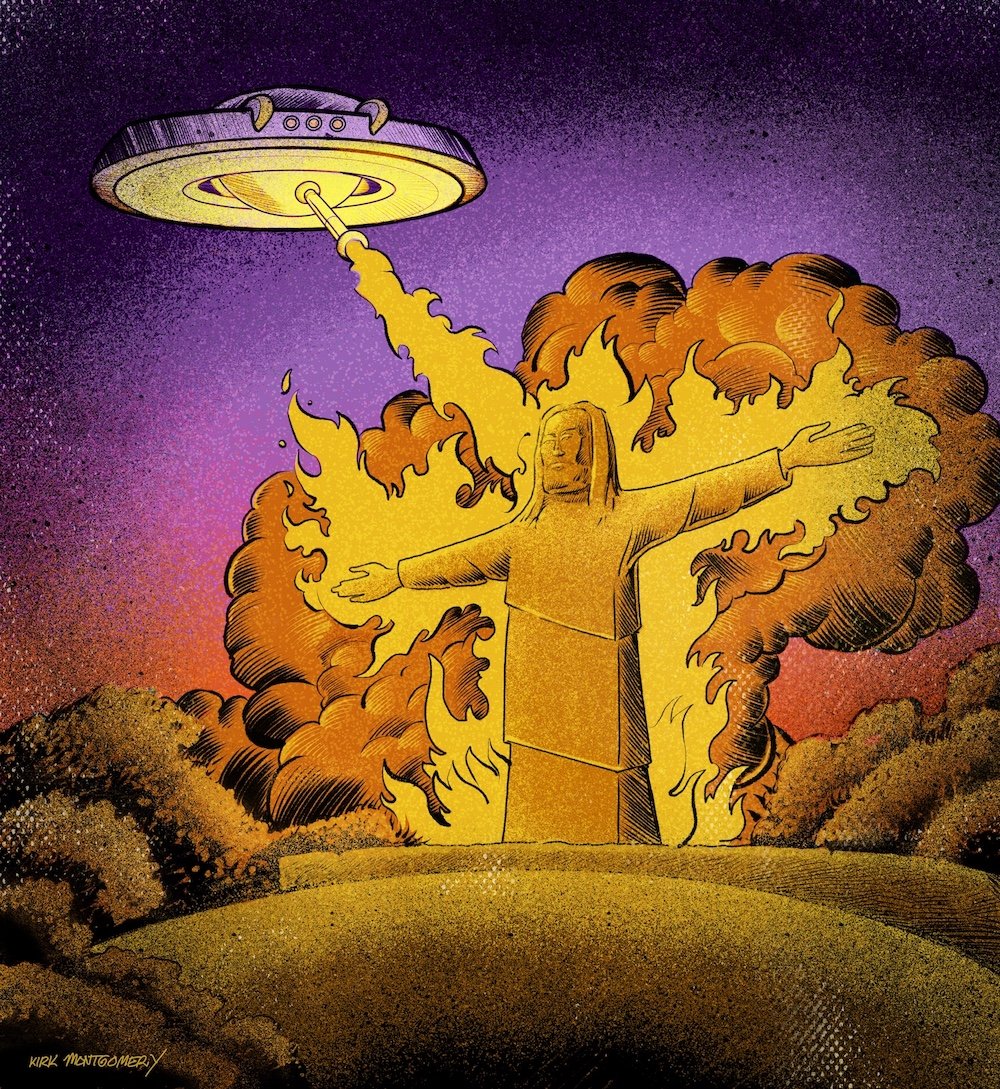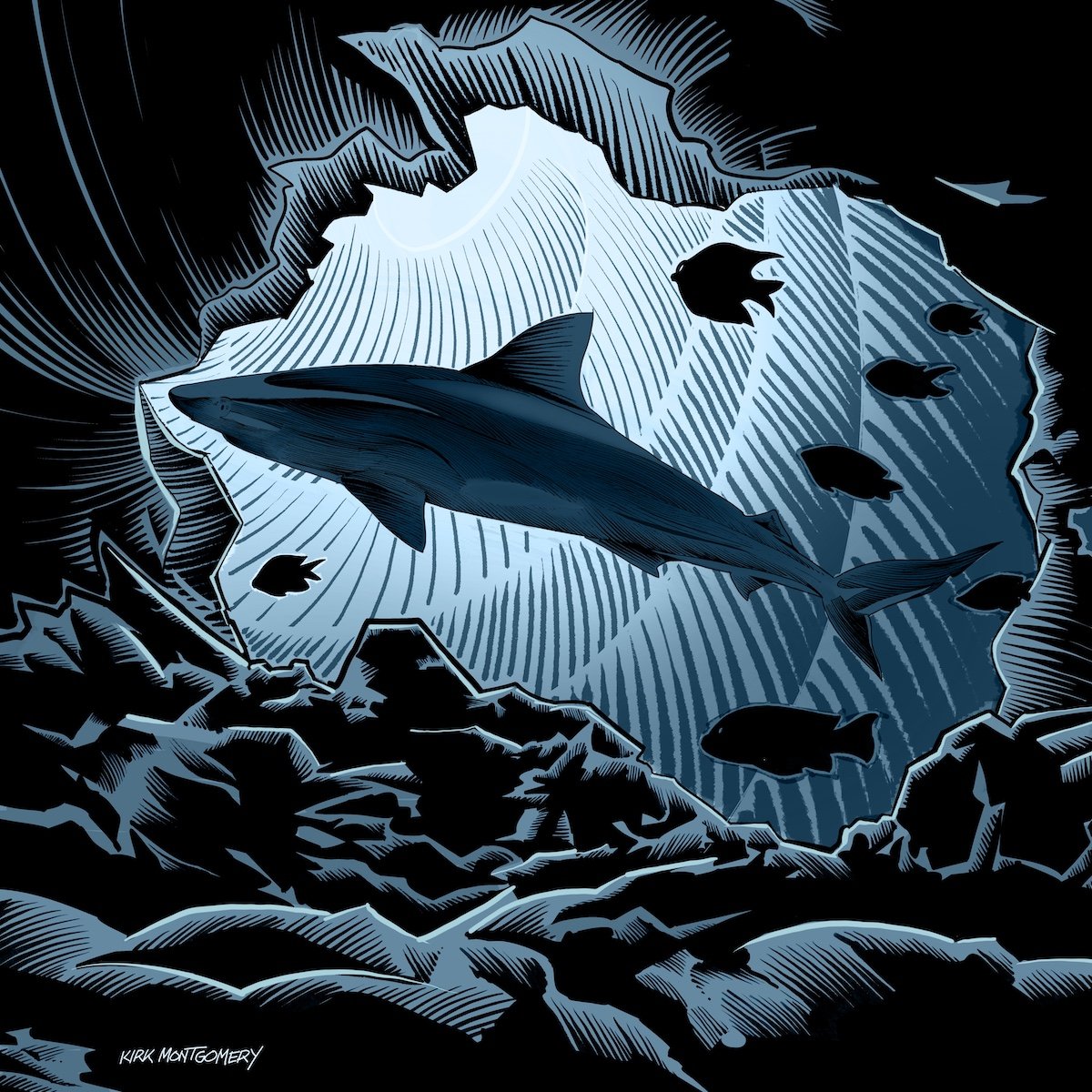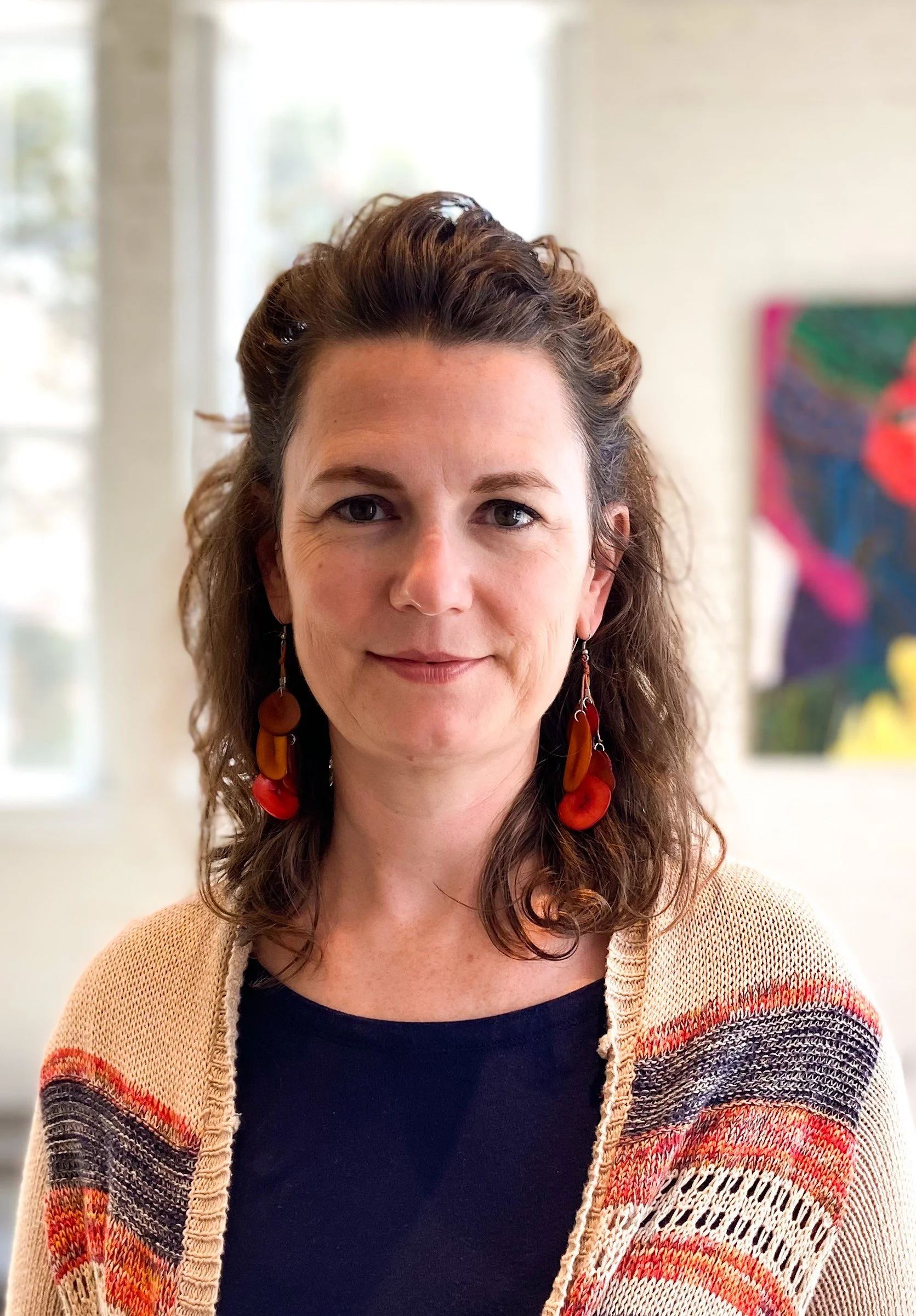Interview with artist Kirk Montgomery
Kirk Montgomery is an artist living and working in Little Rock, Arkansas. His three decade-plus career in the newspaper business continues to shape his artistic point of view, which is bold, graphic and socially conscious. His mashup art ‘draws’ from film noir, graphic novels and truth is stranger than fiction current events. More of Kirk’s work can be viewed at his Instagram and at his website kirkmontgomery.com. (profile photo by Cindy Momchilov)



AAS: Kirk, you are originally from Alabama. What brought you to Little Rock?
KM: I was born in Alabama. I went to the University of Alabama-Birmingham (UAB) before transferring to the Maryland Institute College of Art (MICA) in Baltimore. When I graduated in 1980, my BFA in painting from the Maryland Institute, College of Art led me directly to the ranks of the unemployed, where I remained for a bit.
AAS: You were in the newspaper business for many years, though. Talk about that time and what you did at the various newspapers where you worked.
KM: Eventually I landed a job as an artist at a newspaper back in my hometown of Birmingham, and I worked in the newspaper business for over 35 years. I won numerous state and national awards for graphics and design over the years, and worked on a couple of Pulitzer Prize winning projects at the Inquirer.
After working for the Cincinnati Post and the Inquirer, I landed in Little Rock at the Democrat-Gazette, where I was Graphics Editor and later inherited the Design Director’s job as well. I retired from the paper in 2019. I have a wife and two sons. Louise is also retired now after many years as a medical librarian at UAMS, ACH, and Baptist Health. My son Will lives with his wife Betsy and two children, Eve and Elliot, in North Little Rock, and my son Luke lives in Omaha with his wife Leslie and their son Boone (with another on the way!).
I contributed work to the annual Stop the Presses art shows (featuring newspaper artists and photographers) that Democrat-Gazette features editor Ellis Widner coordinated for Cantrell Gallery for many years, starting in the 90s. I have had several one-man shows, a couple of them were at Cantrell Gallery and one was at Kollective Coffee and Tea in Hot Springs. I had a show at Cantrell Gallery once with John Deering and John Sykes, and one at Mugs Coffee Shop in North Little Rock with Nikki Dawes, Dusty Higgins and Ron Wolfe.
AAS: Your drawings and painting have a newspaper and comic book feel, to me. When did you first start experimenting with that genre?
KM: Because of my fascination with comic book art and technique, I noticed that comic book artists have to work extremely quickly to create so many images to populate their books. Because of this, they’ve become very good at documenting the process they use to make comics, and there are all sorts of videos, tutorials and guides explaining these processes. I began trying to emulate comic book inking and sketching techniques and incorporating that into my work. The best comic book artists have a certain visual language that they use in their work, kind of a shorthand they use to describe things. So, I started trying to do that myself. I don’t consider myself a comic book artist at all. I merely use some of the iconography of comics in my work.
The Fall of Little Rock, 12” x 12”, digital
In the newspaper business we cover disasters, and that experience has seeped into my work. The Fall of Little Rock is one example. In it I imagine a disaster befalling the downtown area due to some horrible circumstance or another. To be clear, I do not draw an image like this because I enjoy this sort of chaos; It’s more that I am haunted by all the chaos and devastation I’ve seen in decades of newspaper work. I sometimes dream about it.
AAS: You must have a love of movies from the 1940’s and 50’s and film noir. Your interpretation of the film Lost Weekend is great.
Lost Weekend, 24” x 24”, digital
KM: I went through a period where I watched film noir constantly. Although that has tapered off, I love that imagery and still sometimes explore it in my artwork. As for Lost Weekend, it’s not as much a take on the Ray Milland film, I just liked the title because I felt that the man I drew seems lost and kind of confused amid the convoluted cityscape I drew around him. The colorization of that image was difficult, and I am still not sure if I am satisfied with it. It’s possible that piece is most successful as a black and white image.
AAS: One of your pieces that really caught my eye is Sympathy for Eraserhead. That 1977 cult film was quite wild at the time. Talk about that piece.
Sympathy for Eraserhead, 24” x 24”, digital
KM: I love David Lynch! I first discovered him in art school in Baltimore, Eraserhead was one of the midnight movies showing at MICA. I’m pretty captivated by Lynch’s entire body of work. Everything he does is weirdly original, and none of it seems commercially viable at all. How he’s been able to succeed as a director is beyond me.
This piece is my attempt to meld David Lynch and the Eraserhead character from the movie into one person. I thought the result was interesting and a little startling.
AAS: How does creating art with the Procreate app work? Do you use a special printer to print the images? Do you then sell prints or are they one-offs?
KM: Procreate is the most intuitive program I’ve ever used. I began using drawing and design software on a Mac back in the mid-1980s, eventually becoming the resident expert in the Inquirer graphics department. So, I’ve used a lot of different programs. But this one, at least for someone with my background, is very simple and powerful.
I have an Apple pencil and a shiny new iPad Pro, and those are my tools. I draw (or paint) on the iPad every day. During the pandemic in 2020, I would draw for 8-10 hours a day and listen to audiobooks while working. I listened to 123 books that year and drew so much that I hurt my hand and had to cut way down on drawing for a couple of months. That’s the one caution about the iPad: an Apple pencil is slim, and I was bearing down really hard as I drew. Doing that for a long period of time can cause a repetitive stress injury if you are not careful. I now try not to bear down so hard, and I have thumb and hand guards I use.
I have a website, kirkmontgomery.com, and prints can be purchased there. I post my work pretty much every day on Instagram. My handle there is kirkmontgomery1. I am on Twitter and Facebook as well, but Insta is where I post my art. I also will send things off to various printers to be printed. All my art is for sale, of course, and at this point I don’t do limited runs, I just print and sell on demand. Because of the nature of what I do, I can scale my work up or down as needed (within limits).
“As a southern artist, in recent years I have realized the need to be more socially conscious. At times my work is surreal, at other times, it is direct”
AAS: You have done some wonderful images that are social commentaries. Ones I especially love are Welcome to Bizzaro World and A Storm Is Coming. What made you create those?
Welcome to Bizzaro World, 24” x 24”, digital
KM: Well, I am disturbed by how lazy, gullible and easily manipulated people seem to be these days. I hate conspiracy theories and I hate the fact that so many people buy into all the garbage that Fox News and other right wing propaganda outlets broadcast/publish on a daily basis. So Bizzaro World -and some of the others I have done- is literally what our political landscape looks like to me. I have a sense that we are letting our country be taken away from us by the people Kurt Andersen writes about in his brilliant book, Evil Geniuses, and I am pretty upset about it.
Regarding A Storm Is Coming, I did grow up in Birmingham, in the 60s. I have read a lot about the Civil Rights Movement and all of the things that happened in my hometown in those years, since I was a little too young to experience it firsthand. Recently I’ve been mulling over how little seems to have changed over the years compared with my perceptions… that is, all of the great strides I thought this country had made on racial discrimination and bigotry seem to have been so easily and swiftly rolled back in recent years! Storm is about the cloud of evil that enveloped Birmingham in the 60’s and the courageous people who fought that evil.
A Storm Is Coming, 24” x 24”, digital
AAS: Half a World Away is a terrific piece – the composition and color palette. There must be a story behind it?
Half a World Away, 24” x 24”, digital
KM: Half a World Away was created right in the middle of the pandemic and it is about how alone and isolated many of us were feeling at that time. The man you glimpse in the window stares out at the world, wondering what is happening in the world beyond his own small patch of land. I set the picture in a distant land. Before the pandemic, we had been talking a lot about taking a trip to Scotland. When I began working on the idea of a man isolated, I immediately decided on that location, because it was on my mind, and because I thought it would be picturesque and interesting. In the end, I drew most of this from my imagination. I hadn’t originally planned on the man in the window, and I debated the wisdom of that choice. But in the end, I felt the image needed a human element.
AAS: Step Right Up is amazing! I can really hear the sounds of the circus sideshows. Talk about the imagery in that piece?
KM: It’s another piece related to the current political and social climate: The world today seems to be filled with all sorts of crazy conspiracy theories and nutty ideas, and I wanted this piece to reflect that by drawing a kind of carnival atmosphere. I decided to create this literal circus in the artwork, in which everything seems just a little skewed. I added Eric Clapton to the image toward the end, because I feel more than a little angry at him for endorsing anti-vaccine gibberish. I find it incredibly appalling when public figures (people whom we would assume have a brain and know better) use their fame to circulate crazy ideas! I just felt that would give the viewer some idea of what I’m getting at in the overall image.
Step Right Up, 24” x 24”, digital
AAS: I am a big fan of Vanness Pens, here in Little Rock. You created some fountain pen designs based on old comic books from the 50’s, I guess. That must have been fun.
KM: What a great assignment that was! I was technically challenged by the specific design specifications, but I loved working on the pen, and I loved the result. I think they sold out of these pretty quickly! I was flattered that Lisa Vanness asked me to do their 80th anniversary pen, and it was great working with them.
Lost Weekend Kapow!, fountain pen design, digital
AAS: You also paint – with paint, which I assume you did mostly before the age of the iPad. Car Bomb is one of those. What different kinds of enjoyment do you get from using paint and a brush versus a stylus?
Car Bomb, 32” x 48”, acrylic on canvas
KM: I often sketched during the morning budget meeting, while listening to editors recite the litany of news stories being prepared for the next day’s paper. The work I have done over the past 10-15 years really began with these news meeting sketches. Car Bomb, for instance, was originally a news meeting sketch. It is one of my biggest paintings and probably one of my best. It has a certain power because of its large scale. It is hard to achieve that using an iPad. With a large scale painting I can really get my arm into it the gestures, whereas the iPad restricts me to using my hand. Car Bomb was a reaction to the Iraq War, and I think I was able to integrate some of the sharp edges and angularity of German Expressionism into it, and that seemed appropriate for the subject.
AAS: Who were your influences and which artist do especially admire?
KM: Well, there are just so many artists I admire… I was very lucky to take painting in high school from the great Willard Whitson, who was probably the best teacher in Birmingham in those days. His sharp eye and ability to verbalize his thoughts and ideas was very helpful to my development as an artist.
I think I’ve already touched on my affinity for comic book artists. The main reason I became an artist was because of the overwhelming influence of artists like Wally Wood, Steve Ditko and Jack Kirby when I was young. I knew their names, and I bought comics back then based on the artists drawing them. I’m sure I wasn’t alone in that. Roger Brown is perhaps my favorite Alabama-born artist. He moved to Chicago and joined an art group called The Hairy Who. Brown made socially relevant and politically charged paintings in a precise, hard-edged style that often referenced Medieval Italian artists like Giotto and Cimabue. I’m a big fan of the American realists, like Thomas Hart Benton, and I love Carroll Cloar, the Arkansas artist who lived much of his life in Memphis. I wrote several pieces for the paper on Cloar and I really enjoyed having the chance to do that. I love German expressionism, whether it’s films or paintings. The movie Cabinet of Doctor Caligari, which was another midnight film at MICA, has been an ongoing source of inspiration. An American artist named Lynd Ward created wordless graphic novels back before such a thing was popular, and his linework and subject matter reminds me of the German Expressionists. His book, God’s Man, has been a big influence on me.
There are a lot of contemporary painters I admire, such as Kerry James Marshall, who I consider to be one of the greatest artists working today (Crystal Bridges has a great example of his work, a piece titled Our Town). 91-year old Jasper Johns is a legendary artist I admire. He’s still working, and he has an unusual dual show that’s on view at the Whitney in New York and the Philadelphia Museum of Art! I like the work of David Sandlin, who I met at UAB. David’s work is totally insane, but also deeply literate. The way he mixes high and low art into this crazy concoction that’s all his own has been a real influence. He is a master printmaker who teaches at the School of Visual Arts in New York and his historical/satirical 76 Manifestations of American Destiny has to be seen to be believed. I was fortunate to work with a number of really talented people at the Democrat-Gazette. Working with artists like John Deering, Ron Wolfe, Al Cameron, Matt Haney, Dusty Higgins, Ferris Williams and Nikki Dawes was by far the best part of working at the paper.





